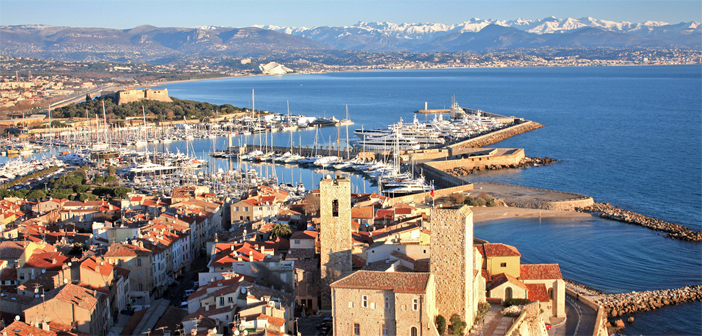This city can be approached in various ways, such as exploring its cultural or spiritual life. One might also mention the cape and its world of celebrities, or the gardens with their rich and varied flora. However, none of these themes will be developed here; we will discuss its history.
In the 5th century BC, the Greeks founded Antipolis opposite Nice, hence the name: the city across. Under the Roman Empire, Antibes was an ally of Caesar against Pompey.
The city became a municipium and a stop on the road to Spain. Many monuments and buildings were erected, sadly all of which have disappeared today. The fall of Rome in the 5th century led to a period of isolation. It was during this same period, around 442, that the first bishop, Saint Hermentaire, settled in Antibes. By 538, Antibes was no longer mentioned on maps, and it would take three centuries for the city to reappear. In the 10th century, William the Liberator expelled the Saracens from Provence.
In the 12th century, two towers symbolized the first defenses; today they are the bell tower of the cathedral and the tower of the castle (Picasso Museum). By transferring the bishopric to Grasse in 1244 to escape raids, Antibes became a city with its own administration of three syndics.
With the annexation of Provence to France, Antibes became a border town and a stronghold. From then on, the enemy was to the east, beyond the Var River. In the 14th and 15th centuries, as was the case in many places, there was a need for city expansion despite the dangers of war, and Antibes extended beyond its ramparts.
The city was eventually destroyed and invaded by the Savoie and their ally, Charles V. In 1552, Henri II erected the Fort Carré, which Vauban would improve between 1680 and 1720. The Roman theater was razed, and a port was excavated. In the meantime, the lords of Antibes, the Grimaldi, sold their lordship to King Henri IV in 1608.
The new defenses were effective, repelling the Austro-Sardinians and the English fleet in 1746. Antibes became and remained a royal city until the revolution. In 1815, Napoleon landed at Golfe Juan and saw the city of Antibes close its doors to him, remaining loyal to King Louis XVIII. The grateful old king granted the city his coat of arms with a motto praising its loyalty.
In 1860, Antibes lost its military status as the border moved further away with the annexation of the County of Nice to France. In 1894, the ramparts were leveled, allowing the city to expand with no threat of an enemy. Particularly with the creation of Juan-les-Pins in 1882, Antibes became a climatic resort where winter visitors sought the mild climate.
For the anecdote: Juan-les-Pins was originally supposed to be named Albany-les-Pins in honor of Queen Victoria’s son.
The death of this prince led to the name Juan, where jazz and nightlife define its current reputation. Antibes has become one of the must-visit hubs of artistic and intellectual life on the Riviera.
Thierry Jan


